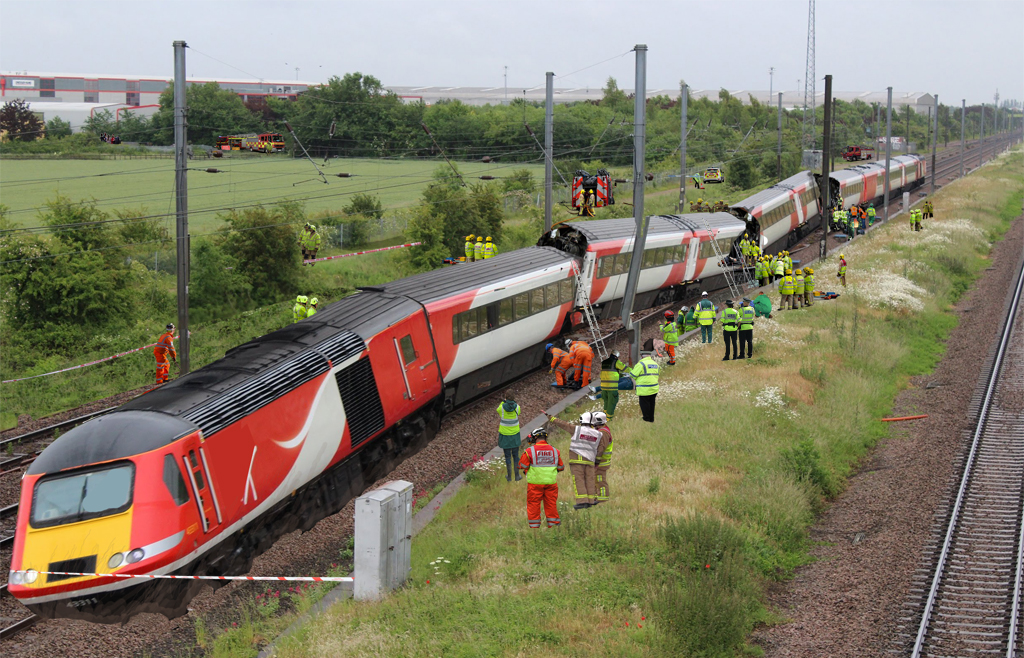Information
-
Document No.
-
Audit Title
-
Conducted on
Part A1. GENERAL INFORMATION
-
Location Photo
-
Location
-
Assessor
-
DESCRIPTIONS FRA = Fire Risk Assessment RRFSO 2005 = Regulatory Reform (Fire Safety) Order 2005 HASWA = Health & Safety At Work Act 1974 BS = British Standard Regs = Regulations ADB = Approved Document B of The Building Regulations ADM = Approved Document M of The Building Regulations FR = Fire Resistance FD 30/60 = 30 or 60 minute fire resisting Fire Door with Cold Smoke Seals AFD = Automatic Fire Detection FEEP = Fire Emergency Evacuation Plan PEEP = Personal Emergency Evacuation Plan VARIOUS FIRE SAFETY ACRONYMS MAY BE USED TO LOWER WORD COUNT FOR PRINTING All Active FRAs and FRA Reviews are held and updated by ABC Ltd. Any status updates on significant findings should be communicated to ABC Ltd to ensure that the active master/s can be updated.
A2. Significant Findings - Snap Shot of Risk Findings
-
1.
-
2.
-
3.
-
4.
-
5.
-
6.
-
7.
-
8.
-
9.
-
10.
-
11.
-
12.
A3. Responsible/Competent Persons
-
Landlord/Owner of the Building
-
Responsible Person
-
Competent Person, Fire Safety Management
A4. Conclusion and Safety Rating
-
Current Site Fire Risk Rating Taking into account the fire prevention measures observed at the time of the Fire Risk Assessment, it is considered that the hazard from fire (likelihood of fire) at these premises is:
- High Life Risk
- Medium Life Risk
- Low Life Risk
-
Conclusion It can be concluded that with the implementation of the recommendations within the timescales provided, as found in the Part 5 - Management of Hazards and Risk: Significant Findings and Action Plans of this risk assessment, and the continued support of the Responsible Person and the management team, the occupants of the building are within a safe environment that is broadly compliant with the Regulatory Reform (Fire Safety) Order 2005. It must be noted if the recommendations are not implemented within required timescales, persons within the risk assessed and adjacent buildings will be at a greater life risk should a fire incident occur. On receipt of this document the Responsible Person must read it fully and comply with the audit requirements. The action plan items are to be completed within the prescribed timescales and actual dates signed off in accordance with the requirements of The Regulatory Reform (Fire Safety) Order 2005 Article 9. All documentation relating to the remedial maintenance of these items must be made available for inspection by the relevant authority. ABC Ltd in agreement with the Fire Authority believes the addition of an Automatic Water Sprinkler System (AWSS) as part of a total fire protection package can protect life, property, heritage, environment and climate. Promoting and sustaining business continuity, permit design freedoms and encourage innovative, inclusive and sustainable architecture. The use of AWSS can add a significant benefit to the structural protection of buildings from fire.
A4. The Building
-
Number of Floors
- 1
- 2
- 3
- 4
- 5
- 6
- 7
- 8
- 9
- 10
- 11
- 12
- 13
- 14
- 15
- 16
- 17
- 18
- 19
- 20
- 21
- 22
- 23
- 24
- 25
- 26
- 27
- 28
- 29
- 30
- 31
- 32
- 33
- 34
- 35
-
Floor area: (m2 per floor)
-
Floor area: (m2 total)
-
Brief details of construction:
-
Occupancy type:
-
Are fire hydrants and wet/dry risers clearly indicated and free from obstructions?
A5. Fire Brigade Access
-
Is there access for Emergency Vehicles?
-
If so, from how many sides, via vehicle?
-
If so, from how many sides, via foot?
A6. The occupants
-
Maximum number of occupants at any given time:
-
Maximum number of members of the public at one time:
-
Maximum number of patients:
-
Staff
-
Contractors
A7. Occupants at special risk
-
Are young persons/work experience employed at the premises?
-
Are there sleeping occupants?
-
Are there disabled occupants?
-
Are there occupants in remote areas?
-
Are there lone workers?
A 8. Previous Fire loss experience
-
Is there any previous history of fire loss in the premises (if yes give details)
A 9. Other relevant background
-
Are there any residential properties in or attached to the building
-
Is there a prohibition notice in force? (if yes give date of issue)
-
Is there an alteration notice in force? (if yes give date of issue)
-
Is there an enforcement notice in force? (if yes give date of issue and date of when work is to be completed by)
-
Extra Relevant Information
Part B: FIRE HAZARDS AND ELIMINATION OR CONTROL
B1. Current Control Measures Are the following control measures in place, where relevant?
-
1. Smoking policy - total smoking ban in the premises. 2. Fire and Arson policy - regular waste collections. 3. Regular testing of electrical circuits and equipment. 4. Cooking is prohibited unless undertaken by appropriately trained personnel, within a designated kitchen environment. 5. Photocopiers should not have fuel stored around them, be in a well ventilated area, not on means of escape routes. Manufacturer’s instructions must be followed. 6. Gas boilers serviced on a regular basis by a Gas Safe registered contractor. 7. Portable heaters are not recommended but manufacturers instructions must be followed if used. 8. ‘Hot work permit’ issued for maintenance using hot work equipment. 9. Fire training for all staff which includes fire prevention, precautions, raising of alarm and evacuation. 10. Correct storage facilities for paper and cardboard, low quantities maintained. 11. Items of furniture should comply with the Furniture & Furnishings (Fire Safety) Regulations 1988. 12. Regular waste disposal collections and correct storage containers. 13 Limited flammable liquids stored in correct containers and within appropriate facilities.
B2. Electrical sources of ignition In accordance with: RRFSO 2005 Article 8 BS7671
-
Are reasonable measures taken to prevent fires of electrical origin?
-
Is the fixed wiring installation periodically tested and inspected?
-
Are portable appliances tested/inspected?
-
Is there a suitable policy about the use of personal electrical appliances?
-
Is there a suitable limitation on the use of trailing leads and adapters?
-
Is all electrical equipment tested with records kept?
B3. Smoking In accordance with: RRFSO 2005 Article 8
-
Are reasonable measures taken to prevent fires as a result of smoking?
-
Is smoking prohibited in the building?
-
Is smoking prohibited in appropriate areas?
-
Are there suitable arrangements made for those who wish to smoke?
-
Is there evidence of breaches of smoking policy?
-
Is the appropriate smoking prohibition notice displayed at the building's entrance?
B4. Arson In accordance with: RRFSO 2005 Article 8
-
Does the basic security against arson appear reasonable?
-
Is there sufficient control of unnecessary fire load in close proximity to the building or available for ignition by outsiders?
B5. Portable heaters and heating installation In accordance with: RRFSO 2005 Article 17
-
Is the use of portable heaters avoided as far as reasonably practicable? I
-
If portable heaters are used, are the more hazardous types (radiant bars and LPG) avoided?
-
If portable heaters are used are suitable measures taken to minimise the risk of ignition of combustible materials?
-
Are fixed heating installations subject to regular maintenance?
B6. Cooking facilities In accordance with: RRFSO Articles 8, 15, 17
-
Are reasonable measures taken to prevent cooking fires?
-
Are filters changed and ductwork cleaned regularly?
-
Are suitable extinguishers available?
B7. Lightning In accordance with: RRFSO 2005 Article 17 BS 62305 Section 5 of The electricity At Work Act 1982
-
Does the building have lightning protection system if required? (if yes has it been tested and are records of testing kept)
B8. Other significant ignition sources that warrant consideration
-
List other ignition sources:
B9. Sources of Fuel and Housekeeping In accordance with: RRFSO 2005 Article 12
-
Is the standard of housekeeping adequate?
-
Are combustible materials separated from ignition sources?
-
Is the unnecessary accumulation of combustibles and waste avoided?
-
Is there appropriate storage of hazardous materials?
-
Are combustible materials stored appropriately?
-
Further Information
B10. Hazards introduced by contractors and building works
-
Is there sufficient control over works by contractors (e.g. Permits to work & hot works permits)?
-
Are there arrangements for the safe storage of gas cylinders and others hazardous materials
-
Are fire safety conditions and instructions communicated to contractors?
-
Further Information
B11. Dangerous Substances In accordance with: RRFSO 2005 Articles 12, 16 Health & Safety At Work Act 1974 (HASWA 1974) Dangerous Substances & Explosive Atmospheres Regulations 2002 (DSEAR 2002)
-
Are dangerous substances present on the premises?
-
Has the risk to relevant persons been adequately eliminated or reduced?
Part C. FIRE PROTECTION MEASURES
C1. Means of escape In accordance with: RRFSO 2005 Art 14
-
Is the building provided with adequate means of escape in case of fire?
-
Are there sufficient exits?
-
Are exits easily and immediately openable where necessary?
-
Do fire exits open in the direction of travel where necessary?
-
Have sliding or revolving doors been avoided as fire exits?
-
Are there adequate means of securing exits?
-
Are there reasonable distances of travel where there is a single direction of travel?
-
Are there reasonable distances of travel where there are alternative means of escape?
-
Are escape routes adequately protected?
-
Are there suitable fire precautions for all inner rooms?
-
Are escape routes unobstructed?
-
Are there suitable means of escape for disabled occupants?
-
Have PEEP forms been completed for disabled residents and staff members (if required)?
C2. Measures to limit fire spread and development. In accordance with; RRFSO 2005 Art 8 BS 476 BS 8214
-
Is there a sufficient standard of compartmentation and sub-compartmentation?
-
Are linings that promote fire spread avoided as far as reasonably practicable?
C3. Escape lighting In accordance with: RRFSO 2005 Article 17 BS 5266
-
Is there a reasonable standard of escape lighting provided?
C4. Fire safety signs and notices In accordance with: RRFSO 2005 Article 14 BS 5499
-
Are fire safety signs and notices suitable and sufficient?
C5. Means of giving warning in the event of fire In accordance with: RRFSO 2005 Article 13 BS 5839 Chief Fire Officers Association - Guidance for the Reduction of False Alarms & Unwanted Fire Signals 2014 (UwFS)
-
Is a manually operated electrical fire alarm system provided?
-
Is automatic fire detection provided?
-
Is there remote transmission of alarm signals?
C6.Manual fire extinguishing appliances In accordance with: RRFSO 2005 Article 13 BS 5306
-
Is there suitable and sufficient provision of portable fire extinguishers?
-
Were questioned staff members aware of the types of extinguishers within their work place?
C7. Relevant automatic fire extinguishing systems In accordance with: RRFSO 2005 Article 13 BS 5306
-
Type of system:
-
Comments and observations:
C8. Facilities, equipment and devices for the protection of Fire-Fighters
-
Types of facilities:
-
Comments and observations:
Part D: MANAGEMENT OF FIRE SAFETY In accordance with: RRFSO 2005 Articles 8, 11 BS 5588
D1. Procedures and arrangements
-
Person responsible for site fire safety.
-
Are there competent persons available to assist in implementing fire safety arrangements?
-
Are appropriate fire procedures in place? (including arrangements for calling the fire service)
-
Is the Fire Emergency Evacuation Procedure readily available for staff to read?
-
Are there persons nominated to respond to fire?
-
Are persons nominated to assist with evacuation?
-
Is there appropriate liaison with the fire service?
-
Do routine in-house inspections of fire precautions take place?
D2. Training and drills In accordance with: RRFSO 2005 Articles 15, 21
-
Are staff given instruction on induction?
-
Do staff receive periodic refresher training at suitable intervals?
-
Are staff with special responsibilities given appropriate training?
-
Are fire drills carried out at appropriate intervals?
D3. Testing and maintenance In accordance with: RRSFO 2005 Article 17 BS 5588
-
Is the workplace adequately maintained?
-
Is there weekly testing and periodic servicing of the fire detection and alarm system?
-
Is there monthly, six-monthly and annual testing of the emergency lighting?
-
Is there annual maintenance and testing of fire extinguishing equipment?
-
Is there annual inspection and test of the lightning protection system?
-
Is there six monthly and annual testing of wet/dry risers?
-
Is there weekly testing and periodic inspection of sprinkler installations?
-
Is there routine checks of fire doors and final exit doors?
-
Other relevant inspection and test
D4. Records In accordance with: RRSFO 2005 Articles 13, 14, 15, 17, 21
-
Are there records of fire drills?
-
Are there records of fire training?
-
Are there records of fire alarm tests?
-
Are there records of emergency lighting tests?
-
Are there records of maintenance and testing of other fire protection systems?
Part E: SIGNIFICANT FINDINGS AND RECOMMENDATIONS
E1. Action Plan Items
E1. Action Plan Items
-
Item 1
-
Priority Rating:
-
Nature and brief description:
-
Action required and person responsible:
-
Target Date for completion:
-
Status and Date - Complete or On-going
-
Item 2
-
Priority Rating:
-
Nature and brief description:
-
Action required and person responsible:
-
Target Date for completion:
-
Status and Date - Complete or On-going
-
Item 3
-
Priority Rating:
-
Nature and brief description:
-
Action required and person responsible:
-
Target Date for completion:
-
Status and Date - Complete or On-going
-
Item 4
-
Priority Rating:
-
Nature and brief description:
-
Action required and person responsible:
-
Target Date for completion:
-
Status and Date - Complete or On-going
-
Item 5
-
Priority Rating:
-
Nature and brief description:
-
Action required and person responsible:
-
Target Date for completion:
-
Status and Date - Complete or On-going
-
Item 6
-
Priority Rating:
-
Action required and person responsible - Interim (if required) and final action to rectify:
-
Nature and brief description:
-
Status and Date - Complete or On-going
-
Target Date for completion:
-
Assessor Signature
-
Item 7
-
Priority Rating:
-
Nature and brief description:
-
Action required and person responsible:
-
Target Date for completion:
-
Status and Date - Complete or On-going
-
Item 8
-
Priority Rating:
-
Nature and brief description:
-
Action required and person responsible:
-
Target Date for completion:
-
Status and Date - Complete or On-going
-
Item 9
-
Priority Rating:
-
Nature and brief description:
-
Action required and person responsible:
-
Target Date for completion:
-
Status and Date - Complete or On-going
-
Item 10
-
Priority Rating:
-
Nature and brief description:
-
Action required and person responsible:
-
Target Date for completion:
-
Status and Date - Complete or On-going
-
Item 11
-
Priority Rating:
-
Nature and brief description:
-
Action required and person responsible:
-
Target Date for completion:
-
Status and Date - Complete or On-going
-
Item 12
-
Priority Rating:
-
Action required and person responsible - Interim (if required) and final action to rectify:
-
Nature and brief description:
-
Status and Date - Complete or On-going
-
Target Date for completion:
E2. Assessor
-
Assessor Signature
-
Date of assessment
E3. Re-Assessment
-
Based on Fire Risk Rating in Conclusion and Safety Rating section:
High Life Risk = 1 year review date.
Medium Life Risk = 2 year review date.
Low Life Risk = 3 year review date.
NOTE: Healthcare premises and Registered care Homes with sleeping risk have a 1 year review date. -
Recommended date for re-assessment




















